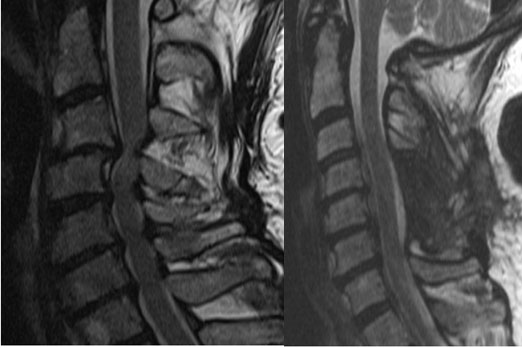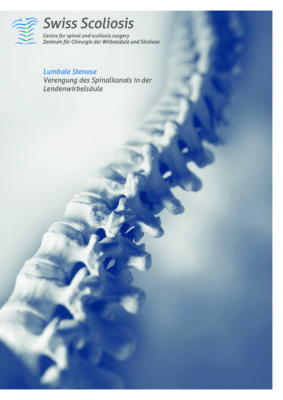Spinal Stenosis
Narrowing of the spinal canal – spinal stenosis – is caused by degenerative alterations (attrition). Residues inside the spinal canal, thickening of ligaments, protrusion of the intervertebral discs or bony spurs from the vertebral joints, cause compression of the nerves and spinal cord. The spinal stenosis can occur at both the lumbar and cervical spine.
Stenosis of the cervical spine (cervical stenosis)
This type of stenosis puts pressure on the spinal cord. This causes unsteady gait, weakness and numbness of both hands and legs, as well as clumsiness..
Operation
If the spinal cord is compressed, an operation is necessary. Usually, the spinal canal can be relieved with surgery from the back. The thickened ligaments, bony spurs and residues are removed using special instruments.

Example 1: Before and after surgery: A cervical stenosis with compression of the spinal cord
Stenosis of the lumbar spine (lumbar stenosis)
In a stenosis of the lumbar spine, nerves are compressed, which causes leg pain, limits one’s walking distance and leads to signs of paralysis in the legs.
Operation
An operation is indicated, if the patient suffers from strong pain, has limited mobility or signs of paralysis.

